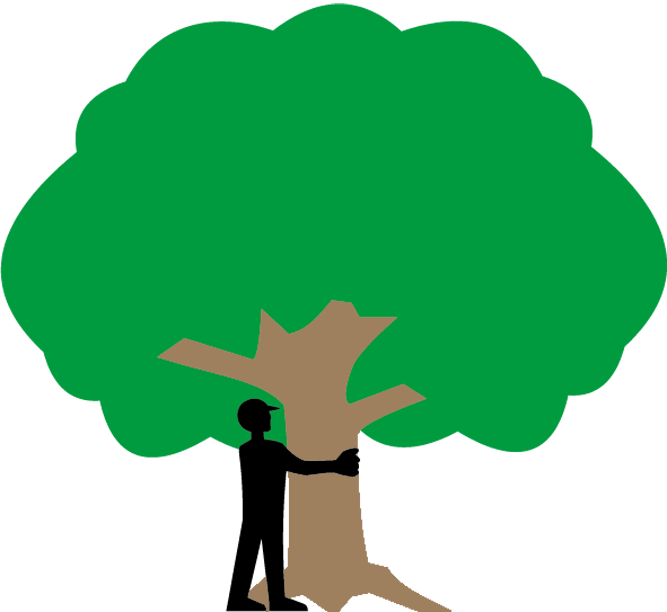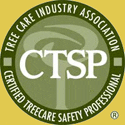Tree Care Services

Pruning and Trimming
Tree trimming is divided into four different classes or types when done by a certified arborist. These well defined classes set up by the International Society of Arboriculture (ISA) go a long way toward making it possible to compare bids wisely. They have also developed a certification process for tree workers. I suggest that you make sure your trees are done according to ISA standards and that you know which class of pruning you will get. Price is not the only factor to consider. Less is not always better.
There are four classes of pruning and can be categorized as light, medium, or heavy. Class one is the best class because it reduces the need for pruning in the future, does the most to improve the health of the tree, and enhances the tree’s beauty the most. It requires more money at the time, but reduces the cost of tree maintenance over the long run. However, I do not always recommend class one. I like it best for older, long-life trees that have been well cared for over a long period of time.
Class One Pruning (as set forth by the ISA but in my words):
- Remove all dead limbs
- Remove all stubs (short, broken or cut limbs that are too long to heal)
- Selective prune to provide clearance around structures, wires, streets, sidewalks, and driveways
- Selective prune to correct crossing limbs (limbs that grow in such a way as to cause them to rub together)
- Remove vines
- Selective prune to enhance the natural beauty and balance of the tree and each limb
- Selective prune suckers (small sprouts that grow along the trunk and inside the canopy)
- Inspect and recommend rods/cables to reduce, control, and/or prevent splitting
- Inspect all crotches, previous wounds, stubs, and cavities
- Selective prune to manage wind resistance and light penetration
- Remove diseased limbs.
Class One is when we do our most complete pruning we do all those things and more. We prune to make trees better able to live next to each other by removing branches that damage each other and by leaving limbs that defend uninvited space. I call this "compatibility pruning". At times, we prune all the way to the growing tips of each limb selecting out small growth that is not growing desirably. This reduces the need for future pruning. We also prune so as to make a tree better able to fill space with well placed branches by removing obstructing limbs that force an otherwise good limb to grow poorly. We prune around structures in such a way as to reduce the need for future pruning by removing as much as can be done without compromising the tree’s health and beauty. We leave nothing undone. Everything the tree needs gets done. This is our "Class One" pruning.
Class Two pruning involves removing dead limbs of one inch or larger in diameter, pruning to clear around structures, sidewalks, driveways, streets, and wires. This class is a good class of care for the trees and costs less. It does not reduce the need for pruning in the future as much as class one does, but it does a lot to reduce future pruning needs. I recommend this class most often. It helps the tree greatly. We include things often left undone by the other guy like: removing stubs that are not healing, leaving a healable wound in it's place, selective pruning to provide growing space for limbs that are being forced to grow undesirably by other limbs, inspecting cavities, and pruning for desirable growth pattern in the long term.
Class Three pruning requires the removal of dead limbs of one to two inches in diameter and larger, plus the pruning for clearance around structures, wires, decks, etc. It is the least expensive class of pruning and does help the trees though less than the other two classes.
The Fourth Class of pruning is custom pruning. You can have whatever you would like done. I will help you to determine what to do if you like.
After the pruning is done we clean the area most thoroughly. When we leave the job it will be difficult to see that we were there by any means other than looking at the tree. We will even remove the dust from the driveways, sidewalks, porches, and streets. We clean the roof and gutters. And when all that is done, we take all the trimmings to the recycler where they are made into soil. We also offer to cut, stack, and leave the fire wood removed from your trees.
Arborist Techniques-ANSI A300 Standards
Deciduous Tree Pruning, when practiced by experienced, knowledgeable arborist's, can be beneficial to trees. However, pruning might not be helpful, and in fact can be harmful, in a number of scenarios that frequently present themselves.
Deciduous trees should not be pruned in the wrong seasons. During the late Summer/Fall time period, trees are under stress (i.e.: using energy), and should not have live limbs removed (dead wooding is a different story). The other season when trees should not be pruned is the period in the Spring when they are using energy to form new leaves.
Trees should not be pruned if they are under stress from other causes, such as recent storm or construction damage, drought conditions, insect infestation, or recent over-pruning, topping, over-fertilizing and other abusive practices.
Old, declining (dying-back) trees should not have live growth removed. Such trees need all the leaves they can produce, and pruning will speed up the rate at which they decline. If an old tree is determined to be a hazard, cabling may constitute a temporary solution; in many cases the tree should be removed (replaced).
Finally, many trees are doing just fine by themselves, and don’t particularly need pruning. Pruning such trees could be seen as a pretty shady practice. (sorry).
Every arborist can come up with a similar list of reasons why pruning certain trees is not warranted; what sets tree services apart is whether they abide by such a list. At Treehugger Tree Care, Inc. we make it a point of pride to fit tree pruning into the larger goal of providing sound tree care. Trees should be pruned when and only when they will benefit by it.
So why prune trees? Proper pruning can improve the health, physical strength, longevity and aesthetic appearance of trees. The International Society of Arboriculture, in its pruning standards, defines four basic pruning procedures: Crown cleaning, crown thinning, crown reduction, and crown raising. When performed competently, using proper cuts and in appropriate circumstances, these procedures should achieve some or all of the above goals.
Four techniques of pruning:
- Crown Cleaning involves removal of dead, broken and hanging branches, is almost always helpful (exception: when storm damage is severe enough that a tree should be removed.) This procedure is especially important for achieving the principal goal of pruning for tree health, that of preventing decay. Cleaning the crown is a relatively simple and inexpensive way to greatly improve the health and appearance of a tree.
- Crown Thinning is the selective removal of live branches which are weakly attached, interfere with other branches, cross them, or parallel them too closely. Thinning allows greater light penetration into the crown, which improves the health of the remaining branches. Skilled arborist's know how to select the eventual “winners” in the quest for light within a tree. They also understand how to help two branches coexist in circumstances where it’s apparent that the tree needs both. An experienced arborist is always careful not to remove too much live growth in a given year, and can come up with creative ways to effectively thin a tree. This may require a finer focus, in which many small cuts are made instead of several large ones. A careful arborist can “work with” a tree, sometimes over the course of many seasons, to help it a achieve a graceful, sound branching structure.
- Crown Reduction can help a tree achieve such a structure while also helping reveal it to the untrained eye. Crown reduction involves the cutting-back of the ends of a tree’s outer branches. When done properly, through the technique of light or moderate drop crotching. Crown reduction can significantly reduce the likelihood of major storm damage occurring in a tree, while introducing only insignificant amounts of decay into the wood. Light to moderate crown reduction is a very difficult task for most tree climbers, as it requires one to climb further out along many of the branches, and also to be adept at the use of pole saws and pole clips while stationed in very tenuous positions. Treehugger is competent at these techniques, and use them when required. Please note: Aggressive crown reduction, or “topping”, should never be advised or practiced by any arborist. Don't top trees!
- Crown Raising is simply the removal of some of the lowest branches on a tree, and is done for reasons of convenience and/or aesthetics, rather than for health reasons. Excessive raising of the crown can cause a number of problems, and should be avoided.
Experienced arborist's understand how trees respond to different pruning approaches. They’ve followed the changes in many particular trees through the seasons and the years, and thereby learned how to care for them, whether through careful pruning, or by choosing not to prune when it could cause harm. Before choosing an arborist to prune your trees, ask him or her to give you the locations of trees he or she has worked with over the years. Trees are precious commodities in Minnesota, and we need to care for them properly.
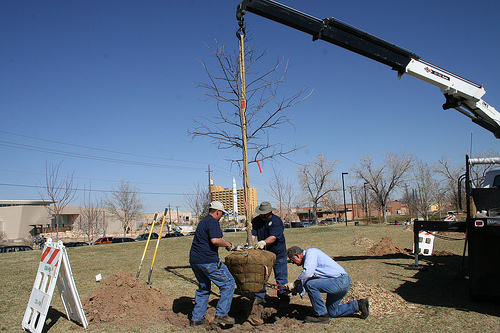
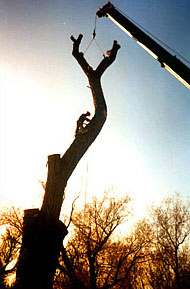
New Tree Plantings
The question most frequently asked to tree care professionals is “Which kind of tree do you think I should plant?” Before this question can be answered, a number of factors need to be considered. Think about the following questions:
New tree planting is the heart and soul of Treehugger's philosophy. “Plant more trees than I remove,” has been my motto. We have dozens of tree suppliers around the Midwest, we offer thousands of sizes, species, and variety's of trees. We can plant:
- Seedlings, saplings, and transplants
- Bare root
- Potted
- Container-grown and field-potted
- Balled and burlapped (B&B)
- Tree spade moved
We use ANSI A300 tree planting standards to give your tree the best start on growing into a healthy mature tree. We offer many low cost options to get the Twin Cities greener each year. Tree planting prices include: tree, delivery, mulching and guarantee for 1 year from planting date. All locations will be Gopher Stated prior to digging. All trees guaranteed 1 full year from planting date (vandalism, lack of care, and acts of god not guaranteed). Planting rates start at $135 and are discounted for multiple tree plantings. Treehugger can select, deliver, and plant your new tree or you can buy and have it ready for the Treehugger to plant it.
New Tree Selection Tips:
Trees and shrubs, often called stock, are available for purchase in different types. These types vary in terms of root mass, size, relative cost, ease of planting, handling, season of availability, and establishment success. In order to purchase the correct stock for your planting project, you should consider the differences between types of planting stock.
Look at the form. Plants with good form require less maintenance than plants with poor form. Look for the following:
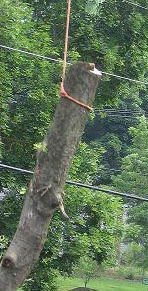
Tree Removal
When cutting a tree down, it is critical to exercise care to protect people, structures, and other plants on your property. Big, small, easy access, tough to get at, a scared friend or a longtime hazard; we can safely remove all types of trees. We acknowledge the integrity and wisdom of each tree that we remove. We understand that each tree deserves an honorable and respectful removal with full attention that it took years (sometimes hundreds) to grow, live, and flourish many feet in the air throughout weather pattens that a human would easily perish to. Each tree tells a story though their growth rings and decay that trace back the years of the woody tissue and leaves- a trees experience of being more resilient and stronger with each blow of the wind, icy rain, heavy snow, or dry ground. I often mention to homeowners to cherish their last days with their woody friend and to know that I will honor there tree as I use my tools to re-shape its stored energy.
Log Splitting
We offer log splitting services for clients that would like to use there wood to heat there homes, cabins, or use for outdoor campfires. We use a 37 ton splitter with a 4 way wedge and can split a full cord of wood in a half of day. We also are able to rent out the splitter for those clients that are “do it your-selfer's,” and offer a great weekend rental rate. Cutting logs to firewood length, stacking split wood, or hauling wood to another location can all be included in a tree removal contract.
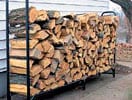
Stump Removals
If you are about to get a tree removed or had one removed years ago, you know the experience: we cut down a tree and think that the experience is over, only to find a stubborn tree stump that will simply not go away. Figuring out how to remove tree stumps can be an arduous process. A shovel, ax, or truck and rope will not pull it out of the ground. Stump removals require specialized equipment, knowledge of wood grain, and planning to make the right calls to local underground utility companies. If your like most homeowners you probably do not have the specialized equipment that we have. We make removing a tree stump easy for you and offer many options to help remove that stubborn old stump.
We are able to remove the largest and most difficult tree stumps with our Rayco RG Super 50 stump grinder. We offer many different options when it comes to the removal of your stumps. Our most popular stump removal is to grind the stump, pile the mulch, and clean-up; this gives the homeowner (or neighbors) to use the fertile mulch in their garden beds, landscape design, or planters. We also offer to haul away the grindings / mulch and to replace the new hole with soil and grass seed or sod at an additional cost. Most tree stumps follow a “price per inch” cost and are easy to quote over the phone if your just needing that stump that the lawnmower keeps hitting grounded out.
Cabling and Bracing
Cabling and Bracing is done only after corrective pruning to reduce weight on weak systems in the tree. As an adjunct, it can help to reduce the risk of tree or branch failure. Correct installation is crucial in order to have the least possible damage as possible to the tree from the installation itself.
One needs to realize that any kind of cutting or drilling on a tree creates a wound inducing a protective reaction. The fewer and smaller the wounds, the less damage to the tree. Extensive wood decay, large cavities, splits, cracks and dying or dead trees are not good candidates for this technique. If the tree is of value, then this is a great option to provide an additional protection in case of failure.

Emergency Storm Work
If you need us, we can be there. We can help without charging you the costly price of emergency services that bigger companies charge. We are here to help our clients when the need arises.
Tree Surgery
A trained eye, a detailed hand, patience, and the experience of knowing that not performing a delicate surgery will undoubtedly be the demise of a tree.
Tree Surgery may be suggested for:
- Wounded trees.
- Improperly planted or mulched trees
- Trees undergoing construction activities
- Surgical root repair (girdling or encircling roots)
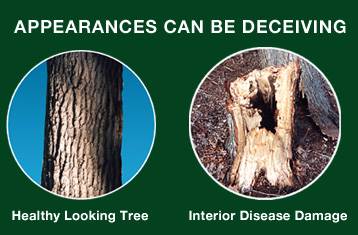

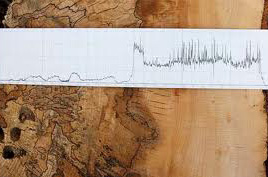
Resistograph
As surely as trees grow up, they will someday come down. The cause of this is often decay started by insect, disease, improper pruning, or mechanical damage. Infected trees may look perfectly healthy on the outside, but when enough wood is decayed it doesn't take a strong wind to bring one down. An untimely gust is often sufficient.
Homeowners concerned about the health and strength of certain trees close to their living space can now call Treehugger Tree Care to have the inside 'support' wood of those trees tested for dangerous rot. Our state-of-the-art wood strength testing system, the IML Resistograph, uses a small diameter needle to bore into suspect trees to measure and record the relative resistance of the inner wood. Very little damage is done to the tree in the process. The results are actually printed out on graph paper for analysis by our senior arborist who can make the appropriate recommendations.
Contact us to receive our “Tree Risk Assessments” info sheet to take the first step in learning which, if any, of the trees in your living space pose a threat to you and your family. Rest a little more easily when a strong wind blows near your home.
